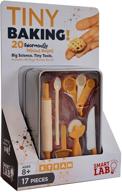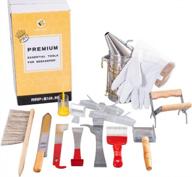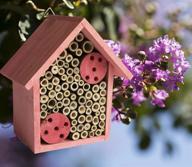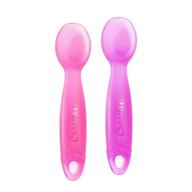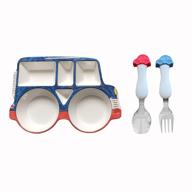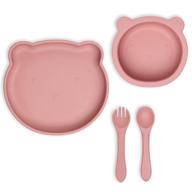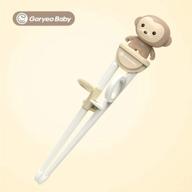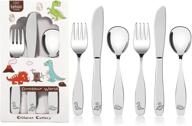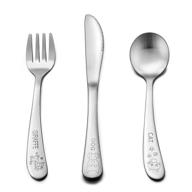Another interesting products
How to choose the right kids' flatware set?
Choosing the right flatware set for your kids can seem like a daunting task with so many options to choose from. Here are some tips to help you pick out the perfect set:
Consider the material
Kids' flatware is available in stainless steel, plastic, bamboo, and silicone. Stainless steel is the most durable, but can be too heavy for little hands. Plastic is lightweight but may contain BPA. Bamboo is eco-friendly but can splinter over time. Silicone is a good lightweight, non-toxic option.
Match their age and motor skills
- Ages 12 months+: Look for soft-tipped spoons and small forks.
- Ages 3+: Choose flatware with easy-grip, chunky handles.
- Ages 5+: Opt for regular-sized flatware to help develop proper utensil use.
Consider safety features
Blunt and rounded edges reduce the risk of injuries. BPA-free materials ensure no exposure to harmful chemicals. Some sets also have protective cases for safe storage.
Pick a design they'll love
Fun and colorful patterns make mealtimes more exciting. Many flatware sets feature kid-friendly themes like cartoons, animals, or their favorite hobbies.
With the right set that fits your child's needs and tastes, mealtimes will be safer, easier, and more enjoyable for the whole family.
Top products in 👦 Kids' Flatware
How to teach kids to use flatware properly?
Learning to use utensils is an important milestone for kids. Follow these tips to teach proper flatware etiquette and usage:
Start with one utensil at a time
Begin with just a spoon or fork. Add a second utensil once they've mastered the first.
Demonstrate proper grip
- Spoon: thumbs up with handle resting on middle finger.
- Fork: tines facing down, index finger on back of fork.
- Knife: cut food by pinching knife handle with thumb on top and index finger underneath.
Practice during playtime
Use pretend utensils with dolls or stuffed animals to reinforce motor skills.
Encourage self-feeding
Allow them to feed themselves, even if it gets messy. Independence builds confidence.
Be patient
It takes time and repetition. Offer praise for effort and milestone achievements.
Set a good example
Kids imitate adults. Model proper table manners during family meals.
Avoid distractions
No TV, toys or electronics at the table so they can focus.
Make it fun!
Sing songs and play games involving fork and spoon skills. Positive reinforcement develops enthusiasm.
With consistent practice and encouragement, your child will be using utensils properly in no time!
How to Clean Kids' Silicone Flatware?
Silicone flatware is a great choice for kids because it's lightweight, durable, and dishwasher safe. However, extra care is needed to remove stains and thoroughly disinfect the silicone.
Handwashing
Handwashing is the most effective method for cleaning silicone utensils.
- Wash with warm, soapy water using a mild detergent. Allow to soak if needed.
- Use a soft-bristle bottle brush, sponge, or dishcloth to gently scrub away any stuck-on food or stains.
- Rinse thoroughly with clean water.
- Allow to air dry completely before storing to prevent bacterial growth.
Removing Stains
For tough stains like tomato sauce or yogurt, try soaking in warm water with baking soda or white vinegar for 30 minutes prior to washing.
Sanitizing
To kill germs, soak washed flatware for 1 minute in a sanitizing solution of:
- 1 tbsp bleach per 1 gallon of water
- 1 tbsp hydrogen peroxide per 1 gallon of water
- Vinegar solution of 1 part vinegar, 3 parts water
Rinse thoroughly after soaking.
Dishwasher
Silicone can be washed in the dishwasher, but may retain stains. Use dishwasher cycles with a drying option, as air drying prevents water spots.
With proper cleaning techniques, silicone kids' flatware can be kept clean, stain-free, and germ-free for safe, long-lasting use.
Similar products
How to Prevent Kids from Playing with Flatware?
It's common for young kids to be fascinated by utensils and want to play with them. While it's a normal phase of development, playing with flatware can be dangerous. Here are some tips to discourage this behavior:
Provide alternatives
Give them safe items to explore instead like plastic spoons, measuring cups, or bamboo tongs. Rotate new "kitchen toys" to keep them engaged.
Set clear rules
- Explain that utensils are for eating, not playing.
- Be consistent in stopping play and redirecting to a toy.
- Apply consequences like time-out if they continue to disobey.
Use distraction
If they reach for flatware, quickly divert attention to a toy, book, or fun activity.
Keep flatware out of reach
Store utensils in a drawer or cabinet with safety locks. Only bring out what's needed at meal times.
Limit access
During meals, provide one piece of flatware at a time. Clear the table fully before releasing another.
Praise good behavior
Compliment them when they use flatware properly to reinforce positive habits.
With patience and consistency, you can teach them that flatware is for eating, not playing. Proper training at a young age will instill safe flatware habits.
How to Store Kids' Flatware Neatly?
Keeping your kids' flatware organized can make mealtimes much easier. Here are some tips for neat and tidy storage:
Invest in a flatware tray
Flatware trays or standing utensil holders keep pieces separated and upright. Choose one with multiple compartments for different utensils.
Designate drawers
If space allows, devote a kitchen drawer just for kids' flatware. Use drawer dividers to separate utensils. Label the drawers with pictures/words.
Try under-cabinet holders
Mounted wire storage racks or utensil baskets provide easy access to flatware. Install them at your child's height.
Use peg racks
Wall-mounted peg racks with outline shapes let kids match and sort utensils.
Consider individual cases
Some flatware sets come with holders for each place setting. Personal cases help teach organization.
Go vertical with wall strips
Magnetic strips or wall-mounted holders keep pieces accessible and visible.
Add labels
Help kids recognize and sort flatware by adding name/photo labels to storage containers.
Make a game out of cleaning up
Song cues and matching games motivate kids to put pieces back properly.
The right storage solutions will keep your kids' flatware neat, clean, and easy to find when it's needed.
How to Find Non-Toxic and Safe Kids' Flatware?
It's important to choose non-toxic flatware for kids to reduce the risks of chemicals like BPA, lead, and phthalates. Here are tips for finding safe options:
Look for stability assurances
Seek out flatware made from stainless steel, bamboo, or silicone that is labeled:
- BPA-free
- Lead-free
- Phthalate-free
- FDA-approved
Avoid plastics numbered 3, 6, and 7
These plastics often contain phthalates and other chemicals. Opt for plastics labeled 1, 2, 4, or 5 which are considered safer.
Research materials
| Safe | Unsafe |
|
|
Read product details
Thoroughly read flatware descriptions and reviews to verify non-toxic claims. Reputable brands will provide material makeup details.
Buy from trusted retailers
Purchase flatware from well-known stores that carefully vet for toxins. Avoid unverified sellers.
Taking time to research and read labels ensures your child's developing body will be free from flatware chemical exposures during important growth years.
How to Use Amazon Prime to Buy Ullabelle Silicone Flatware
Amazon Prime offers fast, free shipping and other benefits that make it easier to purchase products like Ullabelle's non-toxic silicone flatware for kids.
Sign up for a free Prime trial
If you aren't already a member, sign up for a 30-day free trial of Amazon Prime to access benefits like free 2-day shipping.
Find the product listing
Search for "Ullabelle silicone flatware" and select the correct set – Ullabelle's 20-piece silicone flatware set for kids.
Verify it is Prime eligible
Look for the Prime logo by the listing title indicating the product qualifies for Prime shipping and benefits.
Add to cart
Select your color choice and add the flatware set to your shopping cart.
Proceed to checkout
When ready, click "Proceed to checkout" to purchase the set.
Select Prime shipping
At checkout, be sure to choose Amazon Prime delivery to get free 2-day shipping.
Track your order
Once purchased, you can track the status of your order and see estimated delivery date.
Following these simple steps allows you to quickly purchase the top-rated Ullabelle silicone flatware and take advantage of fast Prime shipping.
How To Choose The Best Non-Toxic Flatware For Your Kids?
Choosing the best non-toxic flatware for your kids can be a daunting task, but here are some tips to help you make the right decision:
What Are The Safest Materials For Kids' Flatware?
When it comes to choosing the safest materials for kids' flatware, there are several options to consider. Here are some of the best non-toxic materials for kids' flatware:
It's important to avoid plastic flatware as it contains toxic chemicals that can be harmful to your kids' health. When choosing kids' flatware, consider the durability, age-appropriateness, and ease of cleaning of the materials.
Are There Any Non-Toxic Plastic Options For Kids' Flatware?
While plastic plates and bowls may seem like a convenient option for kids' flatware, they contain toxic chemicals that can be harmful to your kids' health. Therefore, it's best to avoid plastic flatware and opt for non-toxic materials instead. Here are some non-toxic options for kids' flatware:
It's important to note that there are no non-toxic plastic options for kids' flatware. Therefore, it's best to avoid plastic flatware altogether and choose non-toxic materials that are safe for your kids' health.
What Are The Advantages Of Using Stainless Steel For Kids' Flatware?
Stainless steel is a popular choice for kids' flatware, and for good reason. Here are some advantages of using stainless steel for kids' flatware:
Overall, stainless steel is a safe, durable, and versatile option for kids' flatware that is easy to handle and clean.






